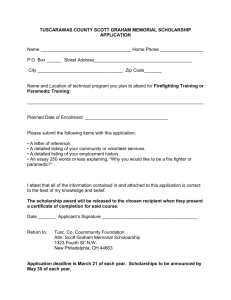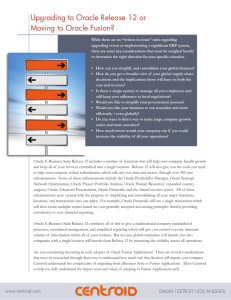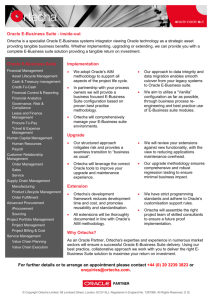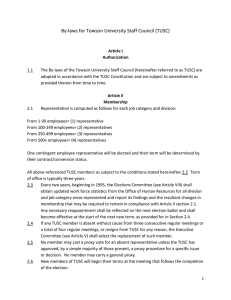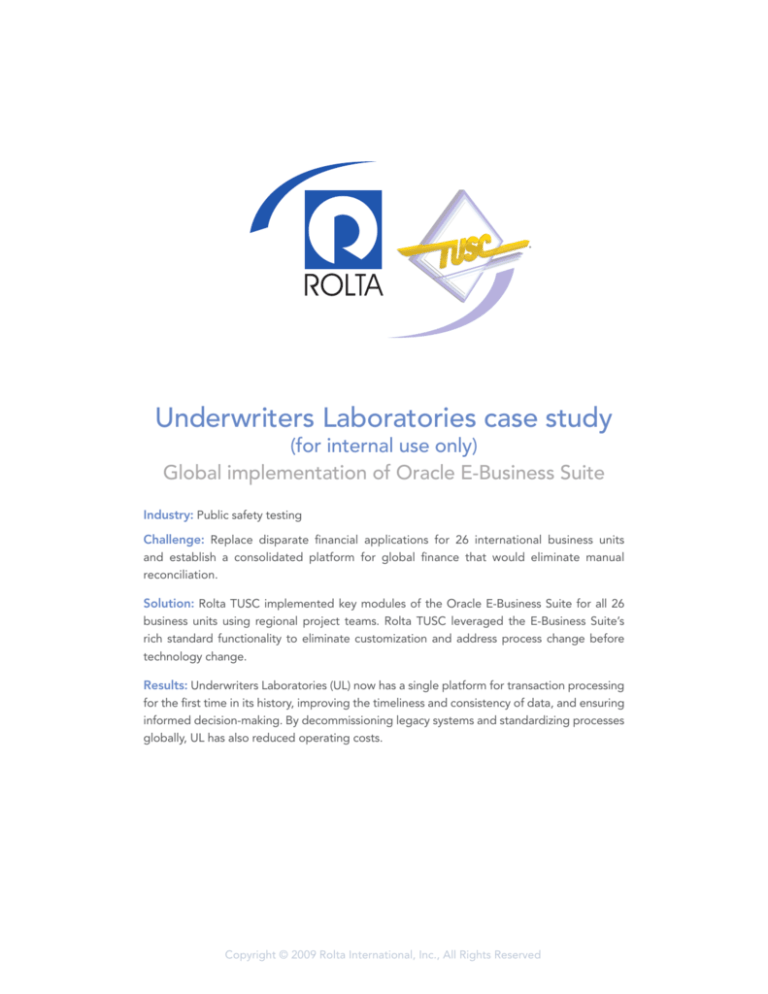
Underwriters Laboratories case study
(for internal use only)
Global implementation of Oracle E-Business Suite
Industry: Public safety testing
Challenge: Replace disparate financial applications for 26 international business units
and establish a consolidated platform for global finance that would eliminate manual
reconciliation.
Solution: Rolta TUSC implemented key modules of the Oracle E-Business Suite for all 26
business units using regional project teams. Rolta TUSC leveraged the E-Business Suite’s
rich standard functionality to eliminate customization and address process change before
technology change.
Results: Underwriters Laboratories (UL) now has a single platform for transaction processing
for the first time in its history, improving the timeliness and consistency of data, and ensuring
informed decision-making. By decommissioning legacy systems and standardizing processes
globally, UL has also reduced operating costs.
Copyright © 2009 Rolta International, Inc., All Rights Reserved
UL case study
The Challenge
With UL’s rapid globalization came inherited IT systems
and management difficulties – particularly with regard
to financial reporting. Each international UL location was
operating unique legacy financial applications, and lack of
integration made a timely, accurate view of global financial
operations virtually impossible. To achieve a holistic view,
a time-consuming reconciliation process was needed to
merge data feeds from 26 legacy general ledgers into the
more comprehensive domestic application each month.
Not only was the process inefficient, but also data was
outdated by the time it was available.
“We needed to establish a standardized platform for
global finance to gain efficiencies and insight into the
true business operation,” said Brian Cunningham,
Director of Global Financial systems for Underwriters
Laboratories. Several years back, we took a hard look
at our financial infrastructure and potential gains from
worldwide standardization. With continued growth, we
were finally ready to make the leap.”
Based on its overall integration potential and diverse
feature set, management decided to replace all of its
legacy applications with Oracle 11i E-Business Suite and
establish a single application platform for global finance.
Modules to be implemented included General Ledger,
Payables, Purchasing, Fixed Assets and Receivables.
Cognizant that the project was too large and businesscritical for the company to tackle on its own, UL began
seeking a partner with significant Oracle expertise to
manage the implementation.
“Rolta TUSC’s depth of experience in implementing
Oracle solutions, its consultants’ thought leadership,
and the team’s overall responsiveness made them the
compelling choice for us,” said Cunningham. “They
understood our business challenge and were prepared
to address the implementation thoroughly and rapidly.”
The Approach
Over an eleven-month period, Rolta TUSC provided the
project management lead and implemented the key Oracle
Financials modules for UL’s North American, European and
Asia-Pacific regions. A primary US-based global project
team, including an executive-level steering committee,
headed the effort with supporting regional teams.
www.tusc.com • www.rolta.com
Critical to the success of the project, Rolta TUSC,
in concert with the UL’s business and functional
project leads, established a global standard for
the implementation, ensuring the suite would be
standardized worldwide. The team adhered to that
standard except in rare instances where statutory
requirements dictated an exception. In addition, the
team made it a priority to utilize standard functionality
and Oracle best practices, always addressing process
change before making technology customizations.
Data conversions from legacy systems were an important
and time-intensive component of implementation. For
each of the 26 identified foreign business units, Rolta
TUSC converted suppliers and supplier sites to support
purchasing and payables activity, fixed assets history, and
general ledger balances – ensuring UL would have access
to critical historical data.
To establish seamless information flow, Rolta TUSC
developed 13 custom interfaces and data extract
processes in support of the US business unit including
sophisticated chart of accounts conversions. Rolta TUSC
also coordinated electronic funds transfer (EFT) payment
processing capabilities in Europe and Asia.
The entire project was tackled utilizing Rolta TUSC’s
four-stage project management methodology, which
combines field-proven methods, PMI best practices and
key aspects of Oracle’s AIM methodology. As part of
that endeavor, Rolta TUSC had each business unit hold
its own conference room pilot (CRP) and share issues and
remediation results globally. As a result, each successive
business unit implementation was more fluid than the
one before.
“We were very pleased with the application knowledge,
project management leadership and dedication to our
success the Rolta TUSC team displayed throughout
implementation,” said Cunningham. “As a former
Oracle applications consultant, I am a tougher critic than
most, and I was very impressed. The Rolta TUSC team
has earned our respect for making this massive effort a
relatively painless process.”
With teams working concurrently across the globe,
Rolta TUSC delivered the overall project on time and
within budget.
2
UL case study
The Results
With Rolta TUSC successfully implementing Oracle
Financials for 26 business units in North America,
Europe, and Asia-Pacific, UL has achieved significant
business results, including:
• Creation of a single chart of accounts—Following
the Oracle implementation, there is one global chart
of accounts for the first time in the company’s history.
This consolidation has not only enhanced reporting
but has also attributed to a more streamlined and
efficient period close process.
• Visibility
into procurement and payables
activity on a global level—Oracle Financials has
improved the accuracy, timeliness and availability
of information to support management decisionmaking on a global level. Enterprise-wide visibility
allows management to analyze aggregated data on
procurement, payables and income and make rapid
decisions. It will ultimately enable the organization
to positively impact the bottom line. UL, for
instance, can leverage the comprehensive data to
negotiate more effectively with vendors and secure
volume discounts.
• Standardized global processes—Previously, the
company’s business units held data and documents
in drastically varying formats. Following the
Oracle implementation, there is one global chart
of accounts and the same reporting methods are
employed by all business units, ensuring that critical
management data is delivered in a standardized,
consistent format and that business units can
exchange information easily.
In addition, by decommissioning legacy systems and
consolidating on Oracle, UL has significantly lowered
its operating and maintenance costs.
Cunningham sees Rolta TUSC as a key contributor in
UL’s ability to achieve these results and a partner on
which his company can depend. “With Rolta TUSC’s
assistance in completing this implementation, we have
improved our efficiency and our ability to provide key
data to our business decision makers.”
About US
TUSC has been known as the Oracle Experts for more
than 20 years, but Rolta TUSC is so much more than that
now! Through the merger of Rolta’s IT Consulting Division
with the acquisitions of TUSC, WhittmanHart Consulting,
and Piocon Technologies, we have gained some of the
world’s most knowledgeable technology and business
experts in enterprise performance management, business
intelligence, and CA infrastructure management solutions.
While we have added exciting new capabilities, we
remain committed to maintaining our expertise and
industry leadership in Oracle E-Business Suite and Oracle
Technology. Now more than ever, Rolta TUSC has the
expertise and solutions your organization will need to be
competitive in our new economy.
• Elimination of reconciliation processes during
monthly close—The Oracle implementation has
completely eliminated manual intervention during
the monthly close process. Other previously
labor-intensive processes, including fixed assets
and purchasing reconciliation, have also been
automated, increasing efficiency. Employee time
previously spent reconciling and processing financial
data can now be spent on value-added tasks. And
with automated financial processes, the company
can keep staffing levels static even as transaction
volumes continue to grow.
www.tusc.com • www.rolta.com
3


